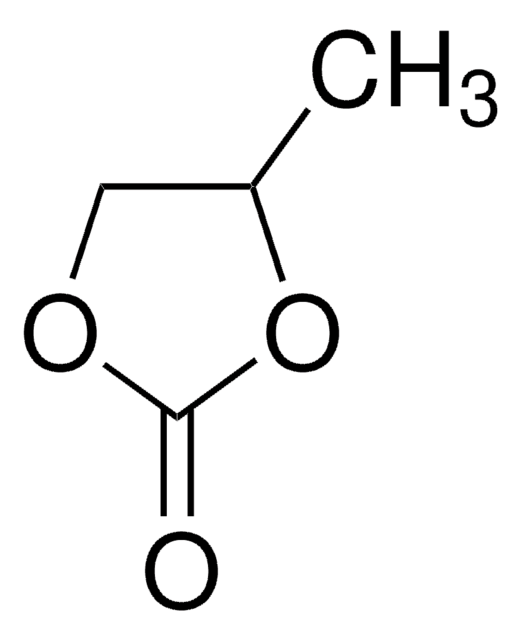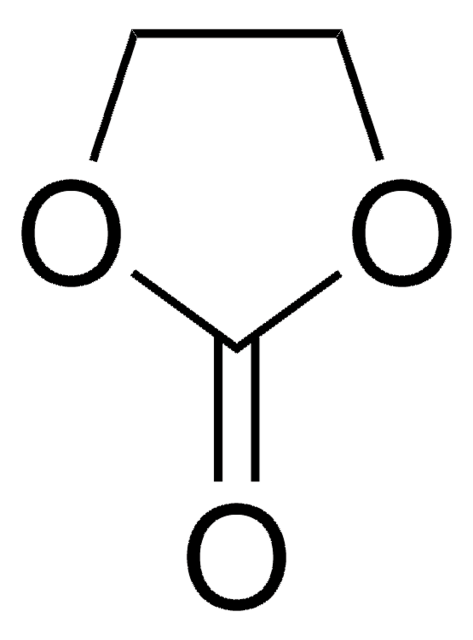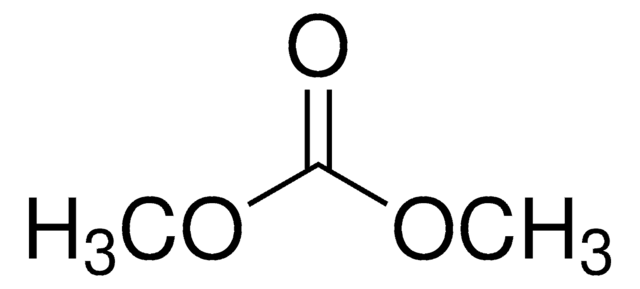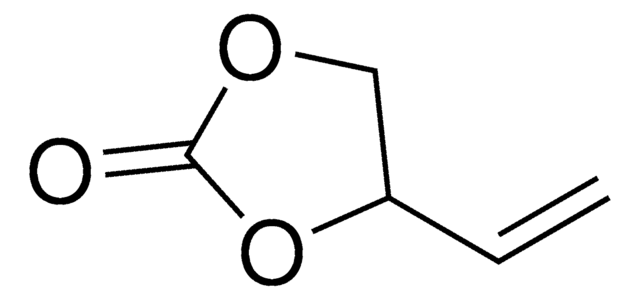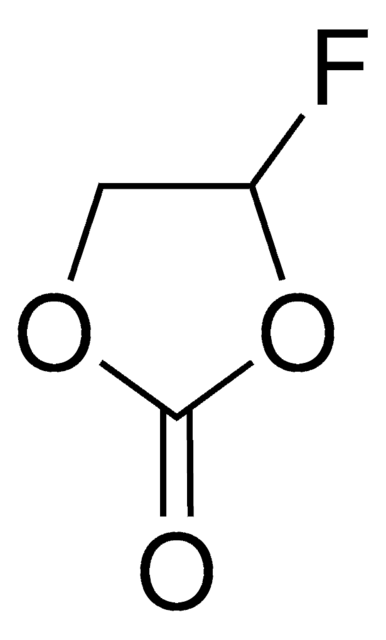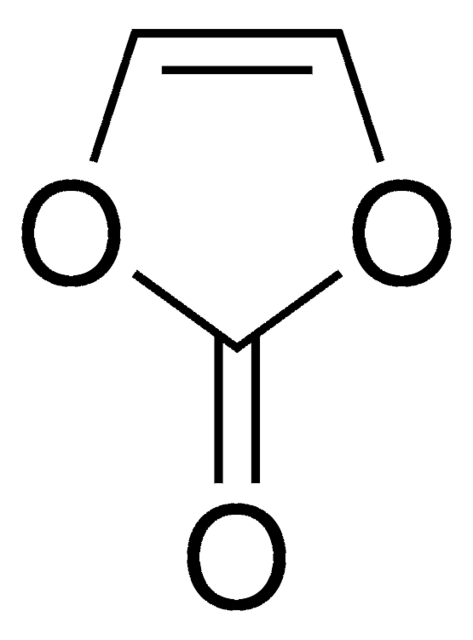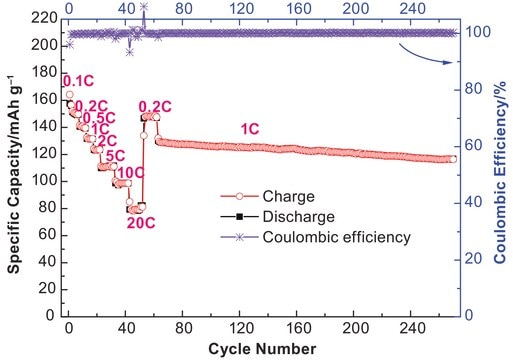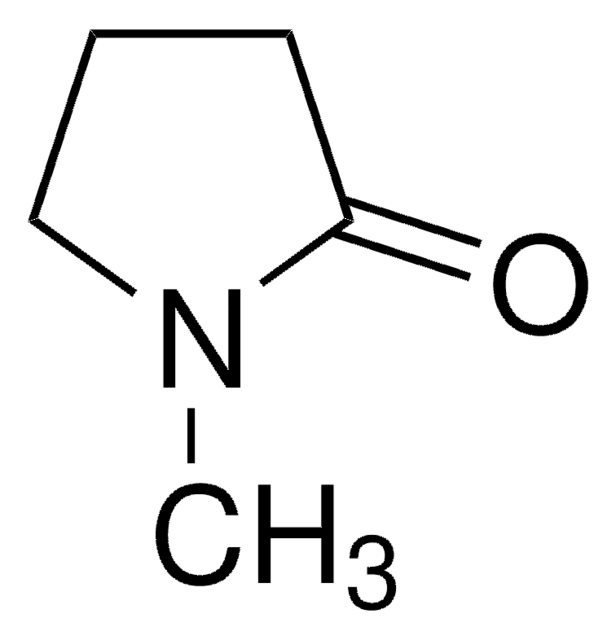455067
4-(Hydroxymethyl)-1,3-dioxolan-2-one
Synonym(s):
(2-Oxo-1,3-dioxolan-4-yl)methanol, 3-Hydroxypropene carbonate, 3-Hydroxypropylene carbonate, 4-Methylolethylene carbonate, Glycerin carbonate, Glycerol 1,2-carbonate
About This Item
Recommended Products
refractive index
n20/D 1.469 (lit.)
Quality Level
bp
137-140 °C/0.5 mmHg (lit.)
density
1.4 g/mL at 25 °C (lit.)
SMILES string
OCC1COC(=O)O1
InChI
1S/C4H6O4/c5-1-3-2-7-4(6)8-3/h3,5H,1-2H2
InChI key
JFMGYULNQJPJCY-UHFFFAOYSA-N
Related Categories
Application
- 4-[(prop-2-en-1-yloxy)methyl]-1,3-dioxolan-2-one (AGC) via Williamson ether synthesis with 3-bromoprop-1-ene.
- Hyperbranched polyethers via copolymerization with cyclic carbonate containing phthalimide moieties.
- (2-Oxo-1,3-dioxolan-4-yl)methyl benzeneacetate by reacting with phenylacetyl chloride.
wgk_germany
WGK 1
flash_point_f
closed cup
flash_point_c
closed cup
ppe
Eyeshields, Gloves, multi-purpose combination respirator cartridge (US)
Certificates of Analysis (COA)
Search for Certificates of Analysis (COA) by entering the products Lot/Batch Number. Lot and Batch Numbers can be found on a product’s label following the words ‘Lot’ or ‘Batch’.
Already Own This Product?
Find documentation for the products that you have recently purchased in the Document Library.
Customers Also Viewed
Our team of scientists has experience in all areas of research including Life Science, Material Science, Chemical Synthesis, Chromatography, Analytical and many others.
Contact Technical Service